Herbicide Injury to Pecan Trees
by Sherri Sanders, CEA - Agriculture
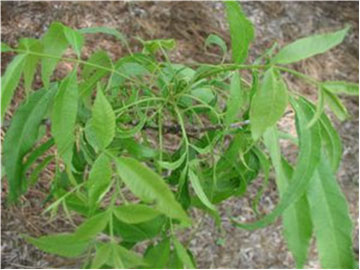
Pecan orchards in the region are often found growing adjacent to fields of annual row crops. As a result, the tree canopies of these orchards are susceptible to injury from herbicide drift from neighboring row crop fields, particularly when herbicide applications are made under conditions that are unsuitable for spraying.
When does herbicide injury normally occur?
This normally occurs from April through June as weeds are eliminated from fields in preparation for planting or soon after planting. Drift may also occur when cotton fields are sprayed with chemical defoliants in the fall.
In addition, the roots of mature pecan trees can extend to a length twice the width of the tree canopy. Pecan tree roots often extend into an adjacent row crop field and can compete with the row crop for available soil, water, and nutrients. Under these conditions, trees may also absorb residual herbicides from the soil in these fields.
During herbicide application, very fine droplets or products of volatilization can find their way to areas where application was not intended and, as a result, trees can show herbicide injury symptoms. The extent to which a herbicide will drift from its intended target depends on several factors, such as the type of herbicide, the environmental conditions (e.g., wind speed) at the time of application, and the sensitivity of surrounding plants.
The most common cause of accidental herbicide contamination is particle drift, which occurs when small droplets are blown off-target by the wind. Damage from this type of drift is usually quite proximate to the herbicide application site and can be significantly reduced or prevented using proper application techniques.
What are the symptoms of herbicide injury?
Injury symptoms resulting from these droplets may be obvious and consistent on the trees nearest the application area. Symptoms often decrease in severity the further one moves from the site of herbicide application.
Plant damage from volatilization of herbicides is much less common and harder to diagnose. It is also difficult to prove or consider pesticide misuse. Damage has been known to occur miles from the application site, depending on the herbicide involved and the sensitivity of damaged plants.
Glyphosate Commonly Causes Damage
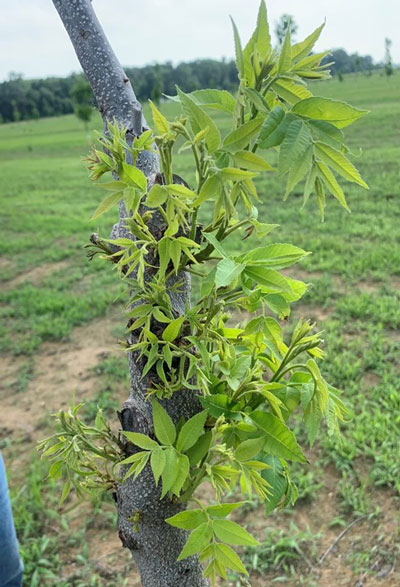 Glyphosate commonly causes damage to pecan trees when the chemicals contact the foliage,
and in the case of young trees (less than 3 years old), when chemicals contact green
bark. In most isolated incidents, trees suffer some damage, leaf deformation, and
defoliation, but they usually refoliate with only minor long-term effects and subsequent
growth usually returns to normal.
Glyphosate commonly causes damage to pecan trees when the chemicals contact the foliage,
and in the case of young trees (less than 3 years old), when chemicals contact green
bark. In most isolated incidents, trees suffer some damage, leaf deformation, and
defoliation, but they usually refoliate with only minor long-term effects and subsequent
growth usually returns to normal.
Glyphosate is a systemic herbicide and thus can potentially affect the trees for more than one year and yield may be reduced. The severity of damage is usually dependent on the rate of herbicide applied and the extent of its coverage.
In very severe cases, glyphosate can kill limbs, but this is rare and would be evident within the first year or two following application. Repeated applications would have more significant, long-term effects, which could eventually result in death of the tree.
What are the symptoms of glyphosate injury in pecan trees?
Primary symptoms of glyphosate injury are thin, strap-like leaves and often some chlorosis or yellowing . Heavy concentrations can cause dieback.
Paraquat
Paraquat is a contact herbicide that only burns the tissue it touches. The extent of damage will be dependent upon the concentration of herbicide in the spray mix and the coverage on the pecan tree. Usually within 24-48 hours after contact, the affected leaves will develop yellow areas where contact was made (Figure 2).
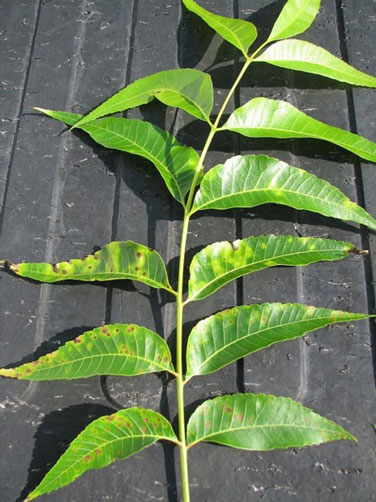
Figure 2. Paraquat drift injury to pecan foliage. Damaged areas turn yellow or chlorotic initially and then as the affected tissue dies, damaged areas turn brown. Glufosinate injury may appear similar.
If only a few yellow spots are observed on leaves, the damage is most likely not significant. However, if a large percentage of the leaf or leaves turn yellow, the damage may be severe. The yellowed areas of the leaf turn brown and necrotic with age (Figure 3). Where a large percentage of the leaf surface is contacted, the foliage will die and drop from the tree. The same is true for pecan flowers, nuts, or any other green tissue which is contacted by the herbicide. In most cases, when paraquat is applied to a mature tree, the tree will refoliate and it will not suffer long-term injury. Paraquat applied to the thin bark of young trees (less than 3 years old) can girdle the tree, resulting in tree death.
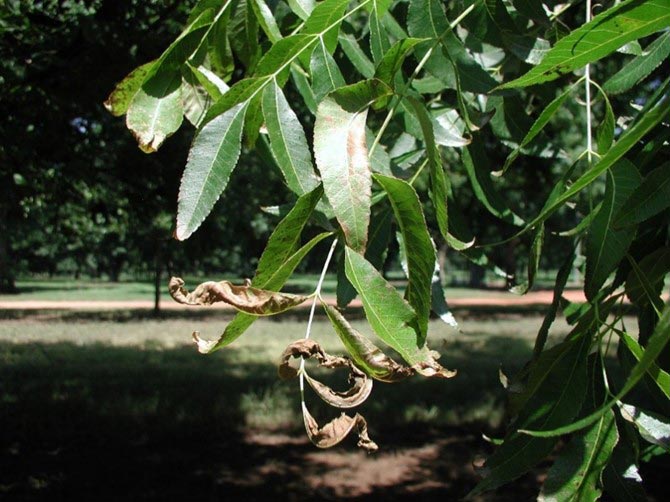
Figure 3. Older paraquat injury of pecan.
Glufosinate
Glufosinate is a contact herbicide and its injury looks very similar to that of paraquat, but symptoms take longer to appear after application than they do for paraquat. Yellowed areas appear a few days after application and turn necrotic with age. Again, as with paraquat, the severity of the injury depends on the herbicide concentration and coverage. Trees generally recover without long-term damage.
Flumioxazen
Flumioxazen is used primarily as a preemergence herbicide, but it does have some postemergence activity. It is often tank-mixed with one or more of the herbicide chemistries listed previously. Injury symptoms are similar to that of glufosinate and paraquat. Trees generally recover quickly.
2,4-D
2,4-D is a systemic auxin herbicide used to kill broadleaf weeds. A member of the phenoxy family of herbicides, 2,4-D was one of the first successful selective herbicides developed and has been used for more than 70 years. Injury symptoms first appear as a folding/curling of foliage (Figure 4). Wrinkling, cupping, curling or twisting of foliage along with some chlorosis or yellowing of the foliage continues within a few days of contact (Figure 5). Affected tissue will turn necrotic and dieback, often leaving a curled leaf stem if the concentration or coverage is great enough (Figure 6). We have observed serious injury, including death of foliage and limbs, experimentally, at leaf tissue concentrations of 25 parts per million, or ppm (Figure 7).
2,4-D can also arrest nut development at the stage at which contact with the herbicide occurred (Figure 8). Limbs or tissue receiving full coverage of a concentrated solution or full rate of 2,4-D will most likely die. We generally do not see evidence of translocation within pecan trees, so if only a small portion of the tree is affected or if the tree receives a low concentration of the material, it is not likely that the tree will be damaged long-term. The larger the percentage of coverage on the tree and the higher the concentration of the material, the more severe the damage will be. Full exposure of auxin herbicides to an entire tree or to a large percentage of a tree at full rates can kill the tree.
Dicamba: Dicamba is another selective herbicide in the phenoxy family of herbicides designed to kill broadleaf weeds. Symptoms are similar to that observed for 2,4-D. We’ve experienced dicamba drift on young pecans in White county in recent years.
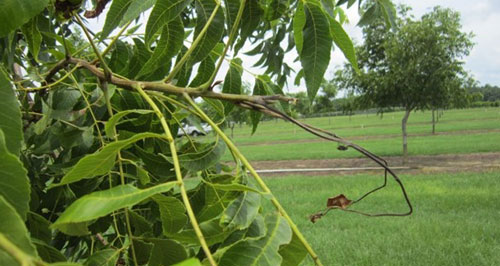
Figure 4. Early symptoms of auxin herbicide injury to pecan exhibiting folding and curling of leaflets.
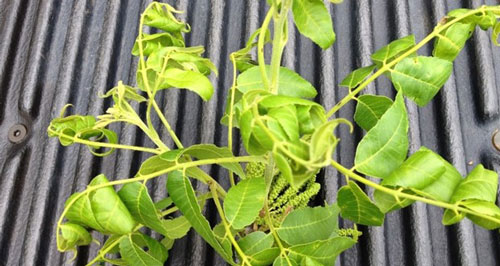
Figure 5. Auxin injury symptoms of pecan. Note twisting, cupping, and curling of leaflets.
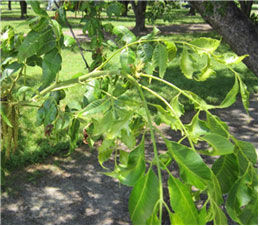
Figure 6. Older auxin herbicide injury of pecan.
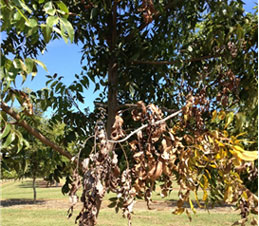
Figure 7. Severe auxin injury to pecan. The entire limb has died after exposure to direct application of herbicide to limb.
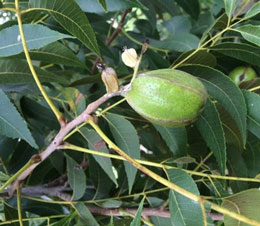
Figure 8. Arrested nut development resulting from contact with auxin herbicide.
Dicamba
Dicamba is another selective herbicide in the phenoxy family of herbicides designed to kill broadleaf weeds. Symptoms are similar to that observed for 2,4-D. We’ve experienced dicamba drift on young pecans in White county in recent years.
This information was adapted from the Herbicide Injury Pecan Trees Circular 1146 from the University of Georgia Extension Service.